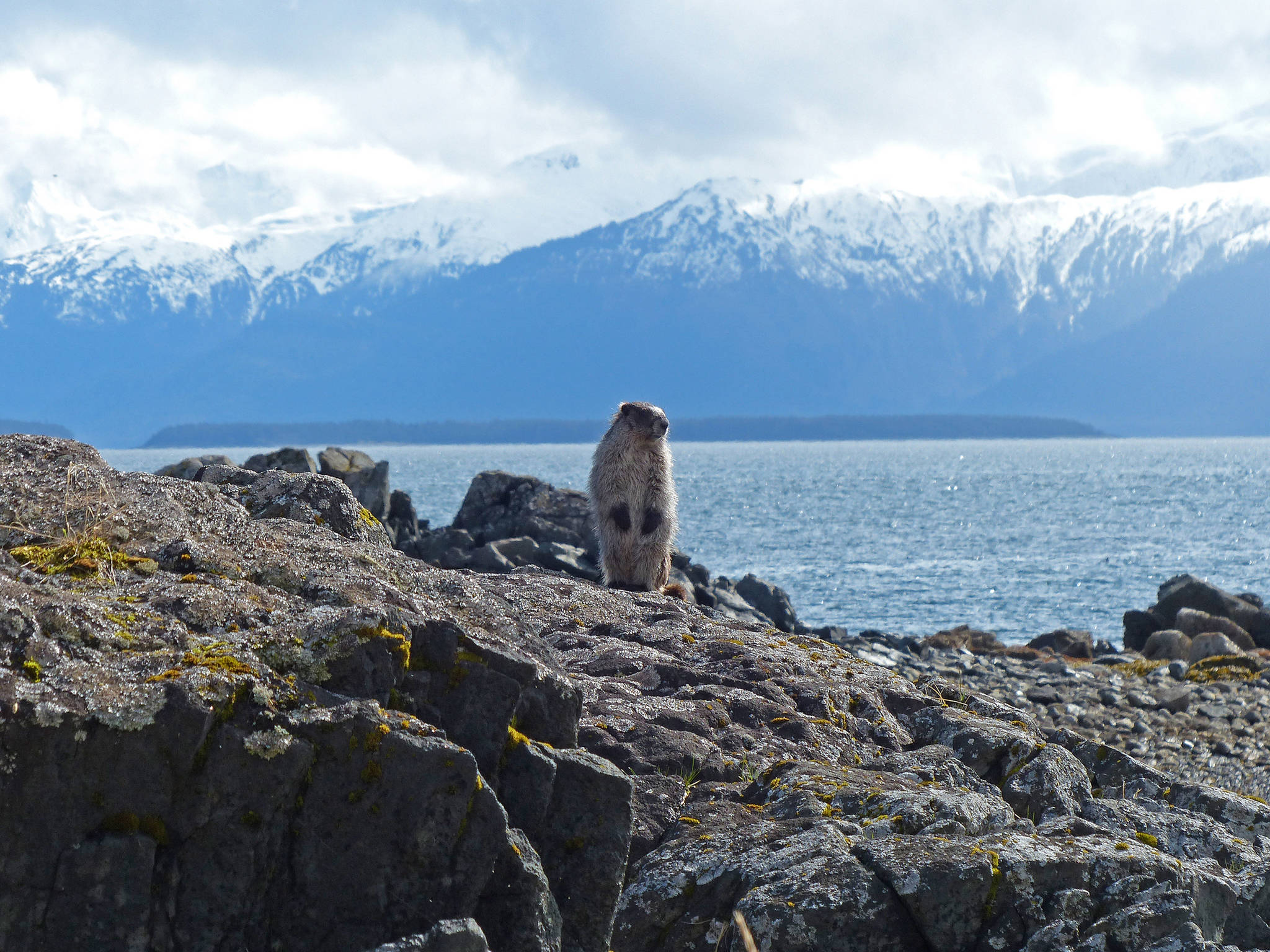The hoary marmot’s call sounds like an alarm. It’s a piercing high-pitched squeal so loud, researchers wear earplugs when studying them in the field, said marmot researcher Link Olson at a Wednesday lecture.
While large rodent’s whistle warns of eagles, bears and coyotes, its changing use of habitat warns of a human-caused threat: climate change.
University of Alaska wildlife biologist Dr. Link Olson, visiting Juneau for a talk at the Alaska Wildlife Alliance’s weekly Wildlife Wednesdays lecture, said the outgoing mammal’s response to climate change speaks volumes. Though it’s an oversimplification to say the animals’ behavior is a harbinger of climate change, how they respond to warming global temperatures will shed light on what’s to come for alpine animals.
Marmot habitat is changing, Olson said, as temperatures warm worldwide. Tree and shrub lines — the high points in elevation for both trees and shrubs — are moving higher and higher, complicating the alpine-bound animal’s relationship to its surroundings.
For the rest of this story, visit the Juneau Empire.

